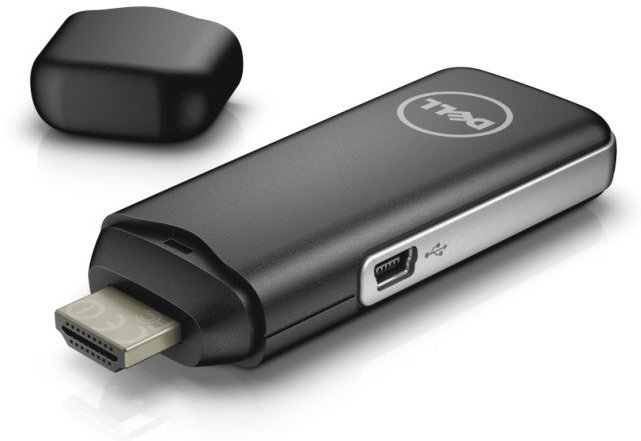Dell unveiled Project Ophelia about a year ago, and has now officially launched the product under the name Wyse Cloud Connect for $129. The device runs Android, but is mostly different from all the Chinese HDMI sticks thanks to its enterprise-oriented firmware that supports Wyse Cloud Client Manager software-as-a-service (SaaS), PocketCloud software, as well as Citrix Receiver, VMware Horizon View client, and Microsoft RDP protocol for remote desktops.
 Wyse Cloud Connect specifications:
Wyse Cloud Connect specifications:
- SoC – Multi-core ARM CortexA9 System-on-Chip (SoC). Last year’s prototype was said to use Rockchip RK3066, but it may have changed since then.
- System Memory – 1GB RAM
- Storage – 8GB NAND Flash + micro SD card slot (up to 64 GB)
- Video Output – HDMI with MHL, DisplayPort
- Connectivity – Dual band Wi-Fi 802.11 a/b/g/n, Bluetooth 3.0
- USB – 1x USB mini for peripherals (keyboard/mouse), 1x Micro USB host port / external power input
- Power – Micro USB or MHL (HDMI)
Cloud Connect has been mainly designed as a thin client for bring-your-own-device (BYOD) environments, and securely access and share work and personal files, presentations, applications and more, but Dell also expects the device to be used for digital signage applications and education. Beside the remote desktop applications, you can also use Android 4.1 like in any other Android mini PC. Another differentiating feature of the device is the presence of MHL so that it can be directly powered by your TV or monitor via the HDMI port, if your screen supports MHL.
Wyse Cloud Connect, model name CS1A13, appears to only be available in the US, and the $129 price tag includes shipping.
Via Liliputing

Jean-Luc started CNX Software in 2010 as a part-time endeavor, before quitting his job as a software engineering manager, and starting to write daily news, and reviews full time later in 2011.
Support CNX Software! Donate via cryptocurrencies, become a Patron on Patreon, or purchase goods on Amazon or Aliexpress




